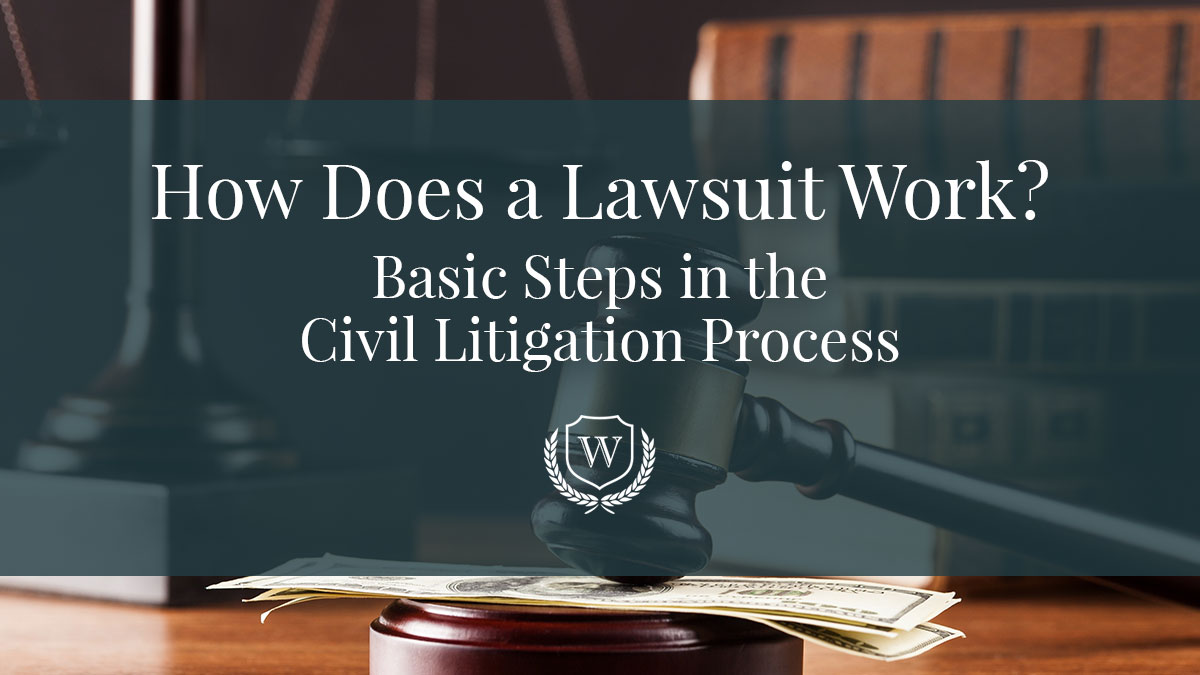
When most people think of lawsuits or court in general they usually think about their favorite John Grisham book or movie or an episode of Law and Order. However, the actual process of litigation is far less glamorous than gets painted in these thrillers. While criminal cases definitely get the most publicity, they actually only accounted for less than 12% of the total cases filed in both Circuit and County Courts last year in FL.
The other 88% of cases are varying types of civil actions. These can be anything from business disputes, landlord tenant actions, breach of contract suits, probate, and a myriad of other types of cases. In these types of cases, people find themselves in Court because they need relief, answers, or actions from another party who refuses to move on their own. Thus, the parties must go to court in order to resolve the matter.
Steps in a Civil Law Case
Find an Experienced Attorney
While most civil law cases are unique, each must make its way through a series of steps. If you are pursuing civil litigation to resolve a dispute, your first step is to consult with a professional attorney to understand the process. Your chosen attorney will help determine if you have a case that can stand in court and the best process to start building a strong case. Your lawyer will continue their role throughout the tedious process of preparing proper documentation and legal paperwork, gathering evidence by conducting discovery and interviewing witnesses, and lastly representing you in a court at all necessary hearings.
When you are selecting an attorney for your needs, remember that these cases often take months or even years to resolve. This means you and your lawyer will be in a working relationship for some time. As a result it is important to make sure that your lawyer is capable representing you, but it is also important to make sure that you and your lawyer are able to get along and work cohesively together. This form of relationship will make the uncomfortable process of litigation much easier.
File Pleadings
After you’ve hired an attorney, both parties involved in the case will typically attempt to resolve the matter without the need of going to court. If a resolution cannot be reached, then parties will file initial court documents explaining their side of the issue at hand.
The plaintiff’s initial pleading is called the complaint, which states the alleged misconduct of the defendant and what the plaintiff would like to resolve with the case. These documents are delivered to the defendant via a process server. Once the defendant is “served”, they can create an official reply, or answer, to the plaintiff. This answers the accusations or allows the defendant to ask for more clarification on the case.
While many of the initial pleadings are formulaic in nature, it is still very important to make sure that your attorney accurately states your position as fully as possible. If you are the Plaintiff, this will mean making sure all possible causes of action are addressed; and if you are the Defendant it will mean addressing all responses, defenses, and possible counter claims.
Discovery
The discovery process involves in-depth legal research like document reviews, performing witness interviews, depositions, written questions known as interrogatories, and other steps to determine as many facts as possible about the case. This is often the longest part of civil litigation cases. Attorneys may call in expert witnesses to validate their arguments, and they may seek their help to testify when the case goes to court.
In a lot of ways the Discovery process weeds out cases before trial. During this process, the parties are actively negotiating and discussing the evidence as it is developing. While a party may be able to just make allegations without any documents backing them up in a complaint or an answer, during discovery the parties must provide evidence and documentation to support their various positions. Failing to do so will lead to the swift disposition of a deficient claim.
Pre-trial
After the discovery process is complete on both sides, the case will go to pre-trial. This is when each attorney (your’s and the opposing party) begins negotiations. The ideal outcome of a pre-trial is to reach an agreement or settlement in this phase rather than spending time and money in court. Often this is accomplished through a Court ordered mediation. Additionally, during the pre-trial stage, either party can also use motions to ask the court to make a ruling or dismiss parts of the case before it actually heads to trial.
Trial
If you are unable to come to an agreement in pre-trial, the case will go to trial. Depending on the circumstances of your case, you may or may not have a jury present. Before trial, the plaintiff and defendant provide their briefs to the judge. Each brief will outline the argument or disagreement at hand and the evidence of each party. At the trial, each party will have the option to make opening statements, then pursue arguments and questioning, and create closing arguments. Lastly, the judge and jury, if present, will then decide the verdict.
If you are in a position where litigation is necessary, it is important to have a trustworthy attorney who is prepared to avidly represent your interests to a Judge or Jury. Our attorneys at the Wynn Law Firm have represented clients both as defense and plaintiff’s counsel across countless areas of litigation including but not limited to property disputes, business disputes, contract disputes, mortgage foreclosures and personal injury. Our team at the Wynn Law Firm in Panama City and Marianna stands ready to represent you whatever your need may be. To schedule an appointment, contact our team today.